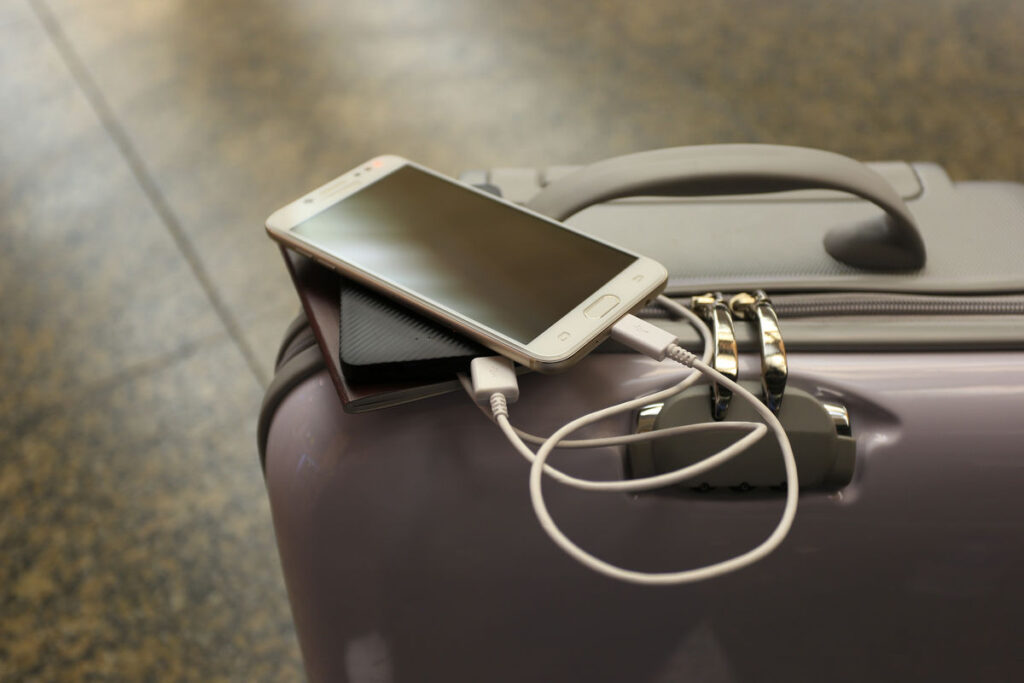
Airline safety incidents and fires involving devices with lithium ion batteries are on the rise, according to a new report from a safety advocacy group.
Battery incidents aboard aircraft have increased by 15% over the past five years, according to the report from UL Standards and Engagement (ULSE), a global safety organization that advocates for safety standards across consumer products.
So far in 2025, there have been at least 46 lithium battery incidents involving smoke, fire, or extreme heat on board planes, according to data from the FAA. Last year, the FAA recorded the highest-ever number of incidents, with 89 lithium battery episodes on commercial and cargo flights in 2024. Over the last two decades, the FAA has recorded 644 of the incidents on planes, with nearly 40% of all incidents caused by portable chargers.
As a result, airlines have begun changing their policies on how passengers can travel with portable chargers and power banks. Earlier this summer, Southwest Airlines placed new restrictions on using portable chargers on board, telling passengers they must keep them within sight when in use. “When a portable charger/power bank is used during a flight, it must be out of any baggage and remain in plain sight,” the airline’s policy states. “Do not charge devices in the overhead bin.”
Southwest says its policy is the first of its kind. But another popular carrier will take matters a step further this fall. Emirates recently announced that starting October 1, using any kind of power bank will be prohibited on board the carrier’s flights. Passengers will no longer be allowed to charge personal devices with a portable charger or charge a power bank on board Emirates’ planes. However, fliers can still carry one power bank with them, as long as it is under 100 watt hours, has capacity rating information available, and is placed in the seat pocket or in a bag under the seat in front of them.
Several Asian airlines, including Thai Airways, EVA Air, and Singapore Airlines passed similar bans earlier this spring. South Korea even passed a nationwide ban on the use of power banks on flights in March 2025.
The new rules are a direct result of the dramatic increase of lithium ion batteries causing smoke and fire on flights. “There has been a significant growth in customers using power banks in recent years, resulting in an increasing number of lithium battery-related incidents onboard flights across the wider aviation industry,” Emirates said.
But lithium ion batteries are found in many more products than just portable chargers. Other common items that cause lithium ion battery incidents, which are also called thermal runway incidents, include vape pens, cell phones, and laptops. However, despite the ubiquity of the batteries—and growing safety concerns—most travelers remain unaware of how to use the devices safely.
According to ULSE’s report, 44% of Americans say they know nothing about lithium-ion batteries, and 58% of consumers don’t feel the risks of lithium-ion batteries are relevant to them personally. “On average, passengers bring four devices that contain a lithium-ion battery with them on a flight,” says David Wroth, director of the Thermal Runway Incident Program at ULSE. “However, most passengers are unaware that their devices even contain a lithium-ion battery.”
The incidents are now happening at an average rate of two times per week, according to ULSE’s data, which is sourced from 37 passenger and cargo airlines. Some of the most recent incidents in August 2025 include a fire that ignited aboard a KLM flight from Sao Paolo to Amsterdam and a ground stop at Norwich Airport in the U.K. after a battery-related fire broke out aboard a small aircraft on the airport’s runway.
Particularly concerning is the fact that thermal runway fires can be more dangerous than blazes caused by other sources. “Should a lithium-ion battery enter thermal runaway, the fire can be particularly difficult to extinguish because they generate their own heat and fuel once ignited,” Wroth says. “These fires also burn much faster than typical fires and can reignite hours later if not fully cooled.”
In addition to safety issues, the incidents also delay passengers: one in five thermal runway incidents result in a significant passenger disruption, including diverted landings, evacuations, or returning to the departure gate, according to ULSE’s report.
Fortunately, there are ways travelers can help prevent lithium ion battery incidents. First, they should ensure their device is certified by a third-party safety group before purchasing it or traveling with it. “Certified products have built-in safety systems including thermal cutoffs, overcharge protection, and sensors that mitigate the risk of thermal runaway.” Consumers can double-check their device is safety-certified by looking for labels or marks from organizations like UL Solutions or Intertek.
Passengers should always check their airline’s policy for lithium ion batteries—especially regarding power banks—before flying. Always place devices with lithium ion batteries in your carry-on, and never pack them in checked luggage. It’s against TSA and FAA regulations to put any device with lithium ion batteries in checked luggage.
It’s also a good idea to place the items in the small bag that goes under the seat, rather than placing them in the overhead bin. Wroth notes that travelers need to keep lithium ion devices within an arm’s reach while flying.
If using a lithium ion battery device in flight, stay alert to the warning signs of thermal runway, like swelling or overheating. Wroth notes that batteries that are damaged, under pressure, overcharged, or substandard are more likely to have a thermal incident. Onboard battery fires are completely preventable, Wroth says, and following the basic safety guidelines can mean ensuring your flight arrives safely and on time.
For the latest travel news, updates and deals, subscribe to the daily TravelPulse newsletter.

